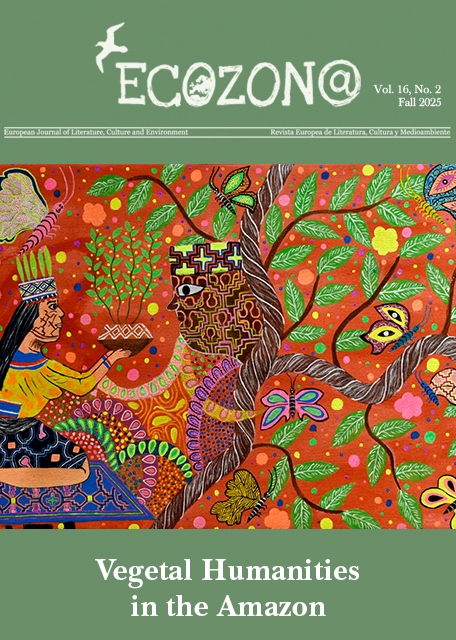Audial and Visual Conversation in Mary Oliver's Dog Songs: Language as a Trans-Species Faculty
DOI :
https://doi.org/10.37536/ECOZONA.2021.12.1.3677Mots-clés :
animal studies, animal language, narrative empathy, Mary Oliver, Dog SongsRésumé
The essay investigates Mary Oliver’s reflection upon, and questioning of, language as a marker of human/nonhuman divide as it unfolds in her second, 2013 “species collection” on dogs, Dog Songs (her first one being Owls and Other Fantasies, her 2006 similar collection, portraying her ways of communicating with birds). Through an exploration of both the visual and audial modes of Oliver’s conversations with the dogs she owned in her life, and treated as companions, this study demonstrates that the poet held an attitude toward the nonhuman which in contemporary theoretical terms would be defined as an “indistinction approach” to the animal question (Calarco 2015). In Dog Songs, Oliver portrays a proximity between humans and animals that ultimately preserves an unavoidable distance. Her writing exploits both her intuition of animals’ capacity for agency and creativity—which accompanies the de-emphasizing of human uniqueness—and her consciousness that we need tropes from human experience to convey our perception of nonhuman ways of life. Moreover, through her representation of the animal’s gaze, of a powerfully ironic reversal of the aims (and effects) of the pathetic fallacy, and of narrative empathy, she proves that an imaginative use of language makes poetry a distinct space for our efforts to envisage an ecosystem that animals may inhabit as our equals.
Téléchargements
Téléchargements
Publié-e
Numéro
Rubrique
Licence
Authors who publish with this journal agree to the following terms:
a) Authors retain copyright and grant the journal right of first publication with the work simultaneously licensed under a Creative Commons Attribution License that allows others to share the work with an acknowledgement of the work's authorship and initial publication in this journal (CC BY-NC for articles and CC BY-NC-ND for creative work, unless author requests otherwise.
b) Authors are able to enter into separate, additional contractual arrangements for the non-exclusive distribution of the journal's published version of the work (e.g., post it to an institutional repository or publish it in a book), with an acknowledgement of its initial publication in this journal.
c) Authors are permitted and encouraged to post their work online (e.g., in institutional repositories or on their website) prior to and during the submission process, as it can lead to productive exchanges, as well as earlier and greater citation of published work (See The Effect of Open Access).










